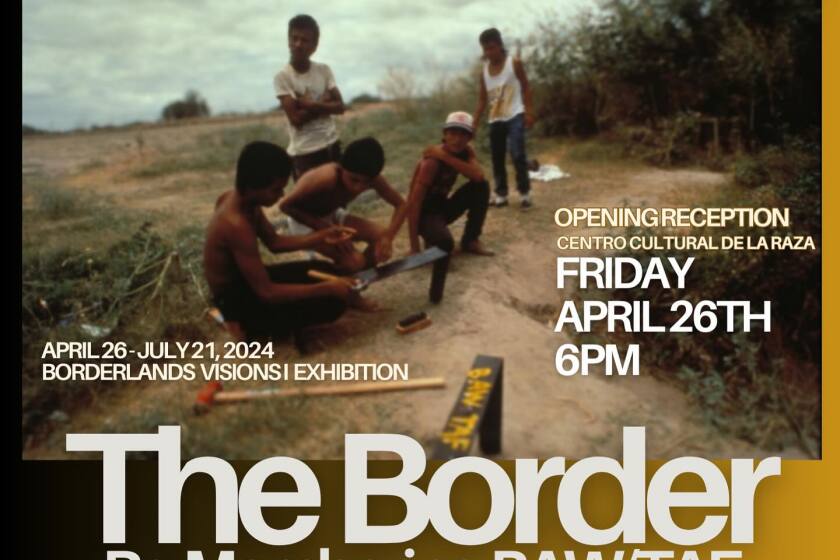National City seeks fairness in port expansion plan
In 1859, Charles Dickens wrote the historical novel “A Tale of Two Cities,” while our region for the last several decades has lived “A Tale of Two Ports.”
One is the port facility that we all get to see in the publicity photos with beautiful skylines, hotels, cruise ships, parks, public amenities, public access and revenue generators to provide public services to our communities and many positive impacts.
The other port is the industrial maritime that we don’t publicize very often with its not-so-pretty heavy industry, pollution, truck traffic, lack of public access and public amenities, and virtually no revenue to provide public services to the adjoining negatively impacted community.
The Unified Port of San Diego is very different in that most port authorities are a single city entity (Long Beach, Los Angeles, Stockton, etc.) while the Port of San Diego is made up of five cities (San Diego, Chula Vista, Coronado, Imperial Beach and National City). All the cities agree that the maritime industry is very important for our region in providing good jobs and being a large part of our economy, as long as it is in someone else’s community. The Unified Port controls the Tidelands and the maritime industrial areas have almost entirely been confined to Barrio Logan and the tidelands of National City.
In National City, it has been a sore spot for many years as we contend with all the negative impacts of our port, having a minimum of public amenities, while the vast majority of the revenue generated here from industrial uses is spent in other communities for their positive impacts. The port authority’s largest tenant, Pasha Group, is located at the National City Terminal and originally was importing up to 35,000 cars a year. It is now importing almost 400,000 cars a year and now has a proposal to import up to 800,000 cars annually. To accommodate this expansion, the port authority is using almost all the National City tidelands for car storage plus it has bought large amounts of land adjacent to the tidelands to allow maritime industrial land in San Diego to be converted to revenue generators for the city of San Diego while expanding the industrial footprint in National City.
The Port Act states that the Port of San Diego was established under state policy “to develop the harbors and ports of this state for multiple purpose use for the benefit of the people.”
National City realizes it will never have a waterfront like the ones the port authority has helped create at San Diego’s Embarcadero, Coronado, Imperial Beach or the Chula Vista Bayfront Plan, but we do ask to reasonably combine regionalism with a long-overdue and well-deserved measure of fairness to give the people of National City a reason to say, “This is why we are a part of the Unified Port of San Diego.”
In that spirit, I have worked with our city team to produce a balanced plan that takes into account the needs that both authority officials and Pasha have said are necessary for future growth, while making sure the impacts of that growth are reasonably addressed and that National City has the much-needed (and long-awaited) assurances that it will have the opportunities for some of the benefits that the other port authority cities have enjoyed. We are beginning to meet with major stakeholders and to this point are getting positive feedback. This is an opportunity for us as a region to demonstrate to the world that maritime and a community can be positive partners where all sides win.
National City is firmly committed to the maritime community and the efficient use of the terminal space and opportunities for maritime use. I myself worked on the National City Marine Terminal for 18 years and fully appreciate the jobs, services and boost to our economy that it provides. What we as a city are looking for is an equitable and fair arrangement so that our residents are not left with the negative impacts while being the vehicle for the port authority to be the positive benefactor for the other communities around the Bay. In the past our voice has not been very well heard, which regrettably has forced us to get louder, so that the historical pattern that has been followed to this point can be changed for the better.
Several proposals have come forward in the past that only seem to create winners and losers. It’s obvious that what we need is not just a “win” for the port authority, a “win” for Pasha and a “lose” for the people of National City, but a win for all three. We hope the region will support a balanced plan for National City!
Get Weekend Opinion on Sundays and Reader Opinion on Mondays
Editorials, commentary and more delivered Sunday morning, and Reader Reaction on Mondays.
You may occasionally receive promotional content from the San Diego Union-Tribune.




